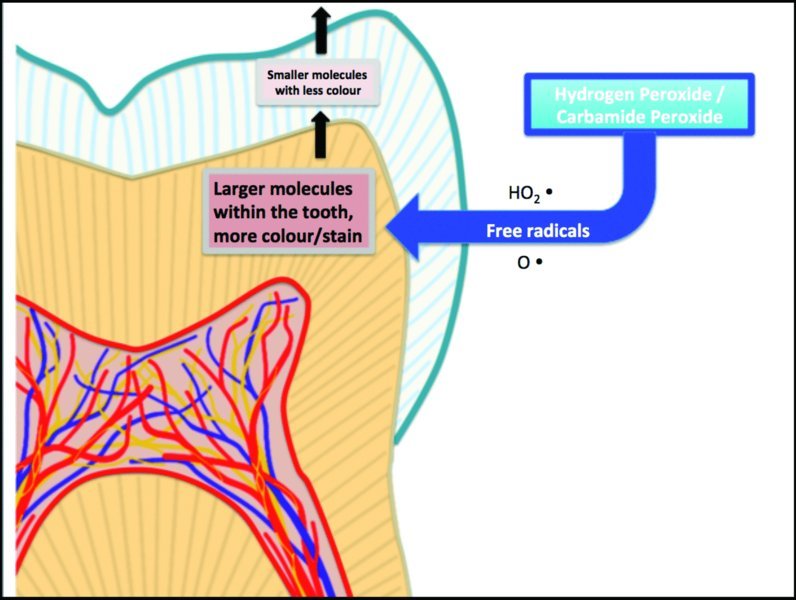Vital Bleaching
Kyle D. Hogg
Principles
Noticeable tooth discoloration, particularly that which affects the teeth located within the aesthetic zone, can be a physical and emotional impairment to many individuals. Discoloured teeth can have a negative impact on an individual’s self-esteem, self-confidence, physical appearance, attractiveness and social interactions. Vital bleaching, as described by Haywood and Heymann, utilising a viscous 10% carbamide peroxide gel in a close-fitting customised mouthguard or tray, has provided a predictable and non-invasive treatment modality to improve the shade of discoloured teeth (Figure 10.2.1).1 Vital tooth bleaching is very safe, with no significant long-term oral or systemic health risks linked to the supervised use of 10% carbamide peroxide.2 Additionally, 10% carbamide peroxide vital bleaching techniques have shown no adverse effects on enamel micro-hardness or on the surface morphology of treated teeth.3 When appropriately utilised, vital bleaching can be a successful, predictable, minimally invasive and safe way to improve the overall aesthetics of an individual’s smile.

Figure 10.2.1 Initial presentation and after vital tooth bleaching. Source: Christopher C.K. Ho, BDS MClinDent Prosthodontics. Reproduced with permission from Christopher C.K. Ho.
Carbamide peroxide bleaching gel breaks down into hydrogen peroxide and urea, with hydrogen peroxide being the active bleaching agent. A bleaching gel containing 10% carbamide peroxide yields approximately 3.5% hydrogen peroxide. The hydrogen peroxide is able to penetrate enamel and dentine, where an oxidation/reduction reaction occurs (Figure 10.2.2). Hydrogen peroxide produces free radicals with unpaired electrons that interact with the larger molecules within the teeth that are responsible for the discoloration or stain. These larger molecules become oxidised and are broken down into smaller molecules, either leaving the tooth structure entirely or reducing discoloration.

Figure 10.2.2 Bleaching producing oxidation and breakdown of complex molecules
The most commonly observed side effects with these peroxide-based bleaching agents are tooth sensitivity and occasional irritation of soft tissues in the mouth (oral mucosa), particularly the gums. Tooth sensitivity often occurs during the early stages of bleaching treatment. Tissue irritation may result from an ill-fitting tray used to contain the bleaching product. Both tooth sensitivity and tissue irritation are usually temporary and stop after the treatment.
Procedures
With your patient comfortably seated upright in the dental chair, utilise lip retractors to aid in taking a separate baseline clinical photograph of each arch that the patient desires to bleach. It is advisable to place a shade tab adjacent to the teeth to be bleached to record the initial or baseline shade. This should ideally be completed before making impressions so as to avoid any shade distortion due to dehydration of the teeth.
Stay updated, free dental videos. Join our Telegram channel

VIDEdental - Online dental courses


